| North Carolina's 189 Odonate species | ||||
|---|---|---|---|---|
| Sort Species by: Family Scientific Name [ Undocumented ] |
| Related Species in LESTIDAE: | Number of records for 2025 = 0 | |
| Photo Gallery for Carolina Spreadwing 14 photos are shown. | Other NC Galleries: Jeff Pippen Will Cook Ted Wilcox | ||
 | Photo 1 by: Amy Padgett Comment: Carteret, 2024-07-27, Salters Creek Gamelands Ponds, Sealevel - 1:47P at ponds | 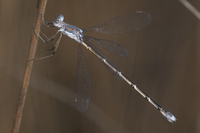 | Photo 2 by: Mark Shields Comment: New Hanover, 2021-12-03, Carolina Beach State Park, limesink ponds. Photo of mature female. |
 | Photo 3 by: Mark Shields Comment: Scotland, 2021-05-01, 17 Frog Pond, Sandhills Game Land |  | Photo 4 by: Mark Shields, Hunter Phillips Comment: Scotland, 2017-05-15, 17 Frog Pond, Sandhills Game Land - First record for county |
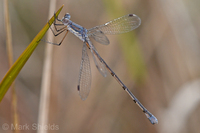 | Photo 5 by: Mark Shields Comment: Carteret, 2016-11-28, ponds along Patsy Pond Nature Trail, Croatan National Forest. Photo of mature female. | 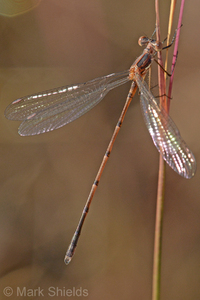 | Photo 6 by: Mark Shields Comment: New Hanover, 2016-11-19, limesink ponds at Carolina Beach State Park - 37 lone males, 5 lone females, 2 pairs in tandem. Photo shows a teneral male. |
 | Photo 7 by: Mark Shields Comment: Carteret, 2016-11-18, ponds along Patsy Pond Nature Trail, Croatan National Forest - 101 single males, 1 single female , and 7 tandem/ovipositing pairs |  | Photo 8 by: Mark Shields Comment: Onslow, 2016-11-16, Stones Creek Game Land - 51 males, 3 females, including 1 pair in tandem |
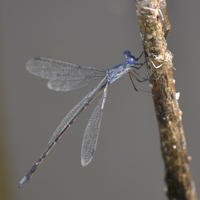 | Photo 9 by: Andrew Rapp Comment: Brunswick, 2016-07-31, Ocean Isle Palms; photo on OdonataCentral | 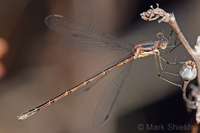 | Photo 10 by: Mark Shields Comment: Carteret, 2016-04-11, ponds along Patsy Pond Nature Trail, Croatan National Forest. Photo of immature female. |
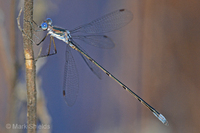 | Photo 11 by: Mark Shields Comment: Carteret, 2015-11-11, ponds along Patsy Pond Nature Trail, Croatan National Forest |  | Photo 12 by: Mark Shields Comment: Carteret, 2015-11-11, ponds along Patsy Pond Nature Trail, Croatan National Forest |
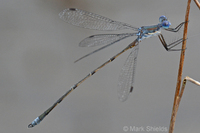 | Photo 13 by: Mark Shields Comment: Onslow, 2015-11-06, Stones Creek Game Land |  | Photo 14 by: Mark Shields Comment: New Hanover, 2015-08-06, Carolina Beach State Park - Pair in tandem, ovipositing at Lily Pond |
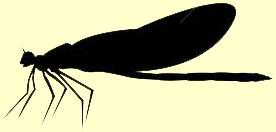
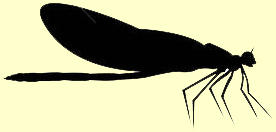 »
»